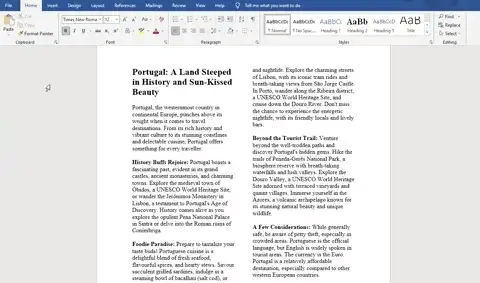Layout (Cambridge (CIE) IGCSE ICT): Revision Note
Exam code: 0417 & 0983
How can you change the layout of a page?
The layout of a page can be changed in a variety of ways, including:
Size
Orientation
Number of columns etc.

Gutter Margin
What is a gutter margin?
A gutter margin provides extra space on either side (left or right) of a document
It ensures text is not obscured by a binding mechanism when the document is folded or opened
Without gutter margins, printed information can be hidden or difficult to read
Benefits include:
Improved readability
Enhanced aesthetics
Without a gutter margin

With a gutter margin

Pagination
What is pagination?
Pagination is a method of dividing information into manageable chunks to control the layout and organisation of a document
Pagination is used in:
Printed materials
Websites and applications

Page breaks
A page break forces content to start on a new page even when there is still space available.
Common uses include:
Starting a new chapter or section
Separating graphics and tables from surrounding text to improve readability
Ensuring all page elements appear at the top of a page
Column breaks
A column break divides a page into multiple columns to suit specific content types
Common uses include:
Creating a newsletter or brochure
Formatting content for easier viewing on screen
Section breaks
A section break creates independent sections that can be formatted differently
Common uses include:
Changing page orientation for a specific section
Applying different column layouts in the same document

Unlock more, it's free!
Did this page help you?